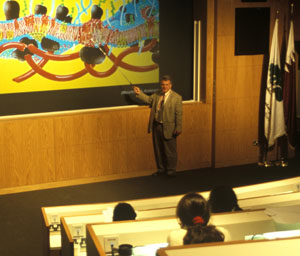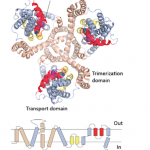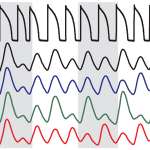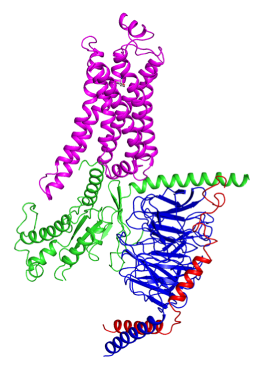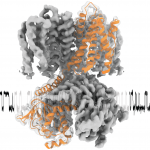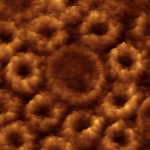Graduate Education
Weill Cornell Graduate School of Medical Sciences (WCGSMS)
For more than a half-century, WCGS has focused on preparing its students for careers in the biomedical sciences. The Graduate School faculty today numbers more than 250, and more than 1,000 students have earned Cornell University PhDs from the school.
Physiology, Biophysics and Systems Biology (PBSB)
The PBSB graduate program website includes exciting information about the research and academic activities of the Faculty engaged in world class research aiming to understand the functional mechanisms in the human body, in health and in disease.
Tri-I PhD Program in Computational Biology and Medicine (TPCBM)
The Tri-I PhD Program in Computational Biology and Medicine (CBM) was established in 2003 to provide a unique training opportunity that takes advantage of the exceptional educational and research resources of Cornell University in Ithaca, its Medical College in NYC (Weill Cornell Medical College), and Memorial Sloan Kettering Cancer Center. It is our belief that the development of such a cadre of computational biologists, trained in the laboratories of exceptional program faculty from all three campuses, will foster discovery in frontiers of basic biological and biomedical sciences.
Tri-Institutional PhD Program in Chemical Biology (TPCB)
The Tri-Institutional PhD Program in Chemical Biology was established in 2001 as one of the first graduate programs in the world to focus on research and training at the interface of chemistry and biology. The program is a collaborative offering of three premier New York City institutions, Weill Cornell Medical College, The Rockefeller University, and the Memorial Sloan Kettering Cancer Center. Located adjacent to one another in the heart of Manhattan’s Upper East Side, these three institutions combine to create a unique university environment and provide unparalleled scientific opportunities to the next generation of leaders in chemical biology.
Accardi Lab
Work in my lab is aimed at uncovering the molecular and structural underpinnings regulating the movement of charged ions across cellular membranes. This process results in the electrical currents underlying scores of fundamental physiological processes such as the neuronal action potential, muscle contraction, insulin secretion and signal transduction. Two classes of membrane proteins mediate transmembrane ion movement through thermodynamically opposing…
Boudker Lab
Our main focus over the last few years has been on glutamate transporters, although we study other proteins as well. In the central nervous system, glutamate transporters are responsible for the uptake of the neurotransmitter glutamate following rounds synaptic signaling. Rapid clearance of the transmitter is essential not only to allow for repeated rounds of neurotransmission but also to prevent…
Christini Lab
Sudden cardiac death, primarily caused by ventricular arrhythmias, is a major public health problem – it is one of the leading causes of mortality, resulting in more than 350,000 annual deaths in the United States alone. Our group’s efforts are focused on improving our understanding of, and therapies for, cardiac arrhythmias. We primarily investigate biophysical mechanisms of electrophysiological instabilities and…
Huang Lab
Our current research includes the structural biological studies to understand the mechanisms by which G-protein-coupled receptors activate G-proteins, and translational cancer biology. We are developing small-molecule compounds to block tumor cell migration, invasion and metastasis, as well as to reinvigorate anti-tumor immune response. We also investigate the physiological functions of G-proteins in blood vessel formation and bone homeostasis.
Nimigean Lab
Our lab is located in the C.V. Starr Laboratory of Molecular Neuropharmacology and features an international environment. Currently, a team of five postdoctoral fellows from different backgrounds, joined by rotating undergraduate and graduate students, is working on projects related to voltage-gating, ligand-gating and structure-function relationships in different ion channel proteins. Motivated graduate students are welcome to join our group.
Scheuring Lab
We perform atomic force microscopy (AFM) based research of biological samples, with a particular interest in membrane phenomena. Our data reports about the structure, dynamics, diffusion, interaction, mechanics and supramolecular assembly of membrane proteins and other membrane constituents.



